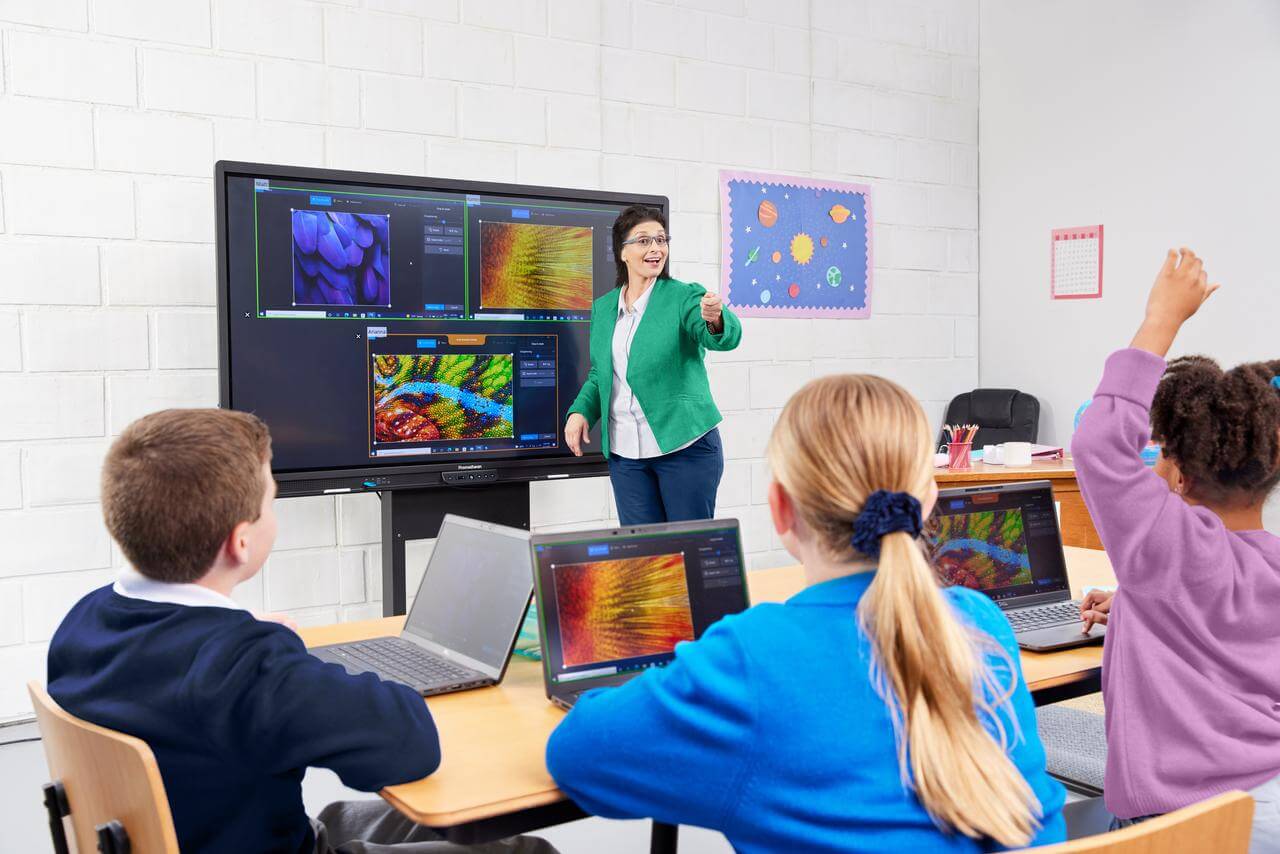A Comprehensive Guide to the Various Discovering Approaches in Main Scientific Research Instruction
The exploration of diverse discovering techniques in key scientific research instruction offers a chance for instructors to improve student engagement and understanding considerably. By analyzing hands-on knowing strategies, inquiry-based strategies, and collective techniques, we can determine reliable techniques that satisfy different finding out styles. Furthermore, the assimilation of innovation and separated guideline plays an essential role in fostering an inclusive setting. The inquiry remains: just how can these methods be properly implemented in the classroom to maximize their effect? The response depends on a better analysis of each technique and its ramifications for training science.

Hands-On Knowing Methods
Hands-on learning methods play an essential duty in key science guideline, involving students in active exploration and testing. These techniques enable students to communicate straight with phenomena and materials, cultivating a deeper understanding of clinical concepts. By using manipulatives, versions, and real-life experiments, teachers produce a setting where students can observe, assume, and evaluate their concepts.
Such methods not only enhance understanding yet additionally cultivate vital thinking and analytical skills. When pupils join tasks like developing basic machines, planting seeds, or conducting chemical reactions, they are urged to ask questions and seek responses with their very own observations. This experiential technique helps to demystify intricate clinical principles, making them a lot more relatable and available.
Additionally, hands-on discovering promotes partnership amongst peers, as trainees frequently operate in teams to conduct experiments or share searchings for. This synergy not only improves their knowing experience but likewise develops necessary social skills. Ultimately, integrating hands-on methods in key science instruction promotes a long-lasting love of understanding and inquisitiveness about the all-natural globe, laying a strong structure for future scholastic quests in science and beyond.
Inquiry-Based Discovering
Inquiry-based understanding is an instructional method that encourages trainees to ask questions, examine sensations, and construct their own understanding of clinical ideas. This method shifts the emphasis from standard teacher-led instruction to a more student-centered experience, where learners take the effort in their educational trip. By promoting curiosity, inquiry-based knowing promotes deeper engagement with the product, permitting trainees to check out topics in a meaningful context.
In technique, this approach typically involves hands-on experiments, monitorings, and important thinking activities that line up very closely with the scientific method. Pupils are motivated to develop theories, design examinations, and analyze data, which grows important skills such as analytic and analytical reasoning. The duty of the educator in this framework is to facilitate exploration, leading students via the inquiry procedure while urging independent thought and partnership.
Additionally, inquiry-based understanding supports a sense of ownership over the knowing procedure, motivating trainees to pursue knowledge actively. This method not just enhances understanding of scientific concepts yet likewise fosters a lifelong love for discovering, outfitting pupils with the abilities essential to browse a progressively complex world.
Collaborative Discovering Approaches
Joint discovering methods empower students to take part in purposeful communications with peers, fostering a shared obligation for their educational results. In primary science guideline, these strategies urge learners to interact to discover scientific concepts, fix problems, and carry out experiments (primary science tuition Singapore). By participating in group tasks, trainees can take advantage of varied point of views, permitting for richer understanding and retention of scientific expertise
One trick aspect of collective discovering is the focus on communication abilities. Trainees should express their thoughts, listen proactively to others, and discuss concepts, every one of which are essential expertises in both academic and real-world contexts. This social interaction not just boosts their understanding of scientific principles but also advertises team effort and problem resolution skills.
Additionally, collective discovering typically causes enhanced inspiration and interaction. When trainees see the worth of their payments within a group, they are much more most likely to take ownership of their learning trip. Teachers can promote this procedure by developing organized group jobs that line up with curriculum objectives while offering assistance on reliable collaboration click this link strategies. In general, incorporating collective learning strategies in main science direction cultivates a dynamic understanding atmosphere that prepares pupils for future academic and social obstacles.
Innovation Assimilation in Scientific Research
The integration of technology in key science direction enhances learning experiences by supplying innovative tools and resources that sustain different teaching techniques, including joint knowing - primary science tuition Singapore. Using digital systems, simulations, and interactive applications enables students to involve deeply with clinical concepts, assisting in an extra hands-on technique to understanding
Virtual labs, for instance, enable students to carry out experiments safely and effectively, advertising inquiry-based understanding. These tools can replicate real-world scientific scenarios, allowing pupils to imagine complicated procedures that would be challenging to replicate in a conventional class setup. Modern technology cultivates communication and cooperation among pupils, as they can share findings and function with each other on projects with online systems.
Furthermore, multimedia discussions and instructional videos can improve lessons by dealing with varied learning designs, making abstract concepts a lot more available. Information analysis devices likewise empower pupils to accumulate and translate scientific information, strengthening vital believing abilities. In general, the tactical incorporation of modern technology in primary science direction not only boosts involvement but additionally prepares trainees for a technically advanced culture, equipping them with vital skills for future scientific endeavors.
Differentiated Guideline Approaches
Separated instruction techniques are necessary for resolving the varied demands of learners in go to this web-site primary scientific research education and learning. These methods enable educators to customize their teaching methods to accommodate varying abilities, passions, and discovering styles within the classroom. By employing separated instruction, educators can develop an inclusive atmosphere that promotes engagement and boosts understanding of clinical principles.
One reliable approach is to utilize adaptable grouping, which permits trainees to collaborate with peers at comparable skill degrees or with differing perspectives. This strategy encourages peer knowing and advertises crucial thinking. In addition, providing options in tasks can empower students, enabling them to select tasks that reverberate with their rate of interests while still meeting curricular goals.
Additionally, integrating tiered assignments is another valuable strategy. Deliberately tasks with differing degrees of complexity, instructors can make certain that all pupils are properly challenged, despite their efficiency. Using developmental analyses to assess comprehending further enables teachers to readjust their educational techniques dynamically, guaranteeing that each student receives the support they require.
Inevitably, carrying out separated guideline methods in primary science education not Discover More Here only enhances student knowing outcomes but likewise grows an interest for science, preparing students for future academic quests.

Conclusion
In summary, reliable main scientific research direction necessitates a multifaceted approach that encompasses hands-on discovering, inquiry-based techniques, and collaborative methods. The combination of innovation and distinguished instruction better satisfies varied knowing designs, promoting an atmosphere favorable to expedition and essential reasoning. By applying these techniques, teachers can boost trainee involvement and comprehension, inevitably nurturing a long-lasting interest for science and inquiry. Such comprehensive methods are essential for developing informed and curious future scientists.
The exploration of diverse knowing techniques in key scientific research guideline offers a possibility for educators to improve trainee engagement and comprehension significantly.Hands-on understanding techniques play a pivotal role in main science direction, engaging students in energetic exploration and testing.Inquiry-based knowing is an educational approach that urges trainees to ask questions, explore sensations, and create their very own understanding of scientific principles.Collective learning techniques empower trainees to involve in purposeful communications with peers, fostering a shared duty for their instructional results. On the whole, incorporating joint knowing strategies in primary scientific research guideline cultivates a dynamic discovering setting that prepares students for future scholastic and social difficulties.